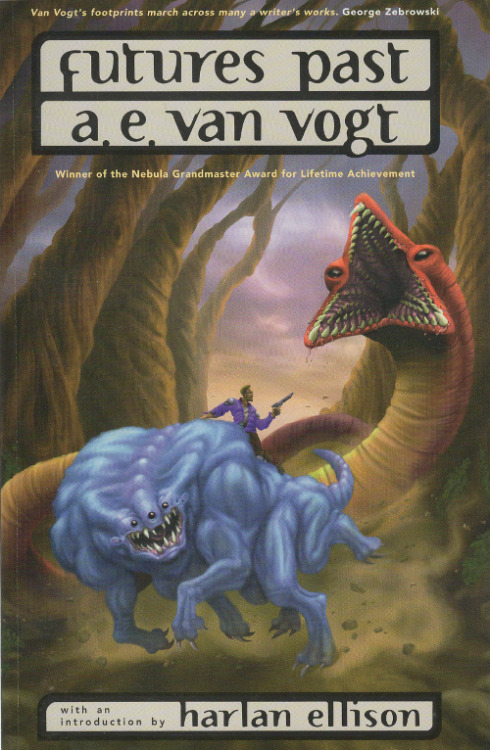A. E. van Vogt delivered a unique style

At BEAR ALLEY. Steve Holland writes about the legendary A. E. van Vogt.
Alfred Elton van Vogt was born in Manitoba, Canada, on 26 April 1912, and educated at various schools in Winnipeg and Morden, graduating to the University of Ottawa in 1928. His first story sales were to True Story confession magazines in the early 1930s whilst working as a census clerk and representative of Maclean Trade Papers. It was here that van Vogt honed a unique style, based on his reading of John W. Gallishaw’s The Only Two Ways to Write a Short Story: each scene was built up on a five-step programme into a series of roughly 800 word blocks which established background, character and purpose and drove the story forward with dialogue, conflict and the introduction of sub-plots; to complicate things further, each of the 90 or so sentences in each block was a “fictional sentence” involving an emotion when writing for women’s magazines or, in his science fiction, what van Vogt called “a hang-up” – some piece of missing information which the reader’s imagination had to supply. A later system he developed was to solve any story problems by forcing himself to wake up every hour and a half to think about a solution; his subconscious would often have the problem resolved by morning.
Tiring of confessions and after a period of writing plays for Canadian radio, he rediscovered his early love of science fiction pulps, and began submitting stories and serials to ASTOUNDING SCIENCE FICTION in 1939. Of his 38 novels, his earliest are still regarded as classics: his first novel, Slan, dealt with a persecuted race of human-bred mutants and the attempts of Jommy Cross, learning to cope with his powers as he grows from adolescence to manhood, to bring peace between ‘normals’ and their physical and mental superiors; The Weapon Shops of Isherat its simplest level mixes future politics, immortality and galactic scale space opera; The World of Null-A and its sequel The Pawns of Null-A introduced Alfred Kotzybski’s General Semantics – a system through which the higher levels of the mind could be accessed via non-Aristotelian (or null-A) teaching – into a galaxy-spanning political intrigue whose hero – Gosseyn (go sane) – switches from one doppelganger body to another; the four stories that made up The Voyage of the Space Beagle revolved around ‘nexialist’ scientist Elliot Grosvenor and how he and the crew of an intergalactic spacecraft cope with a variety of alien attackers, one sequence a remarkable foreshadow of the Alien movie produced thirty-six years later.
Read the rest of Holland’s interesting biographical essay at BEAR ALLEY.
For more info about FUTURES PAST, visit the Tachyon page.
Cover by Michael Dashow.
